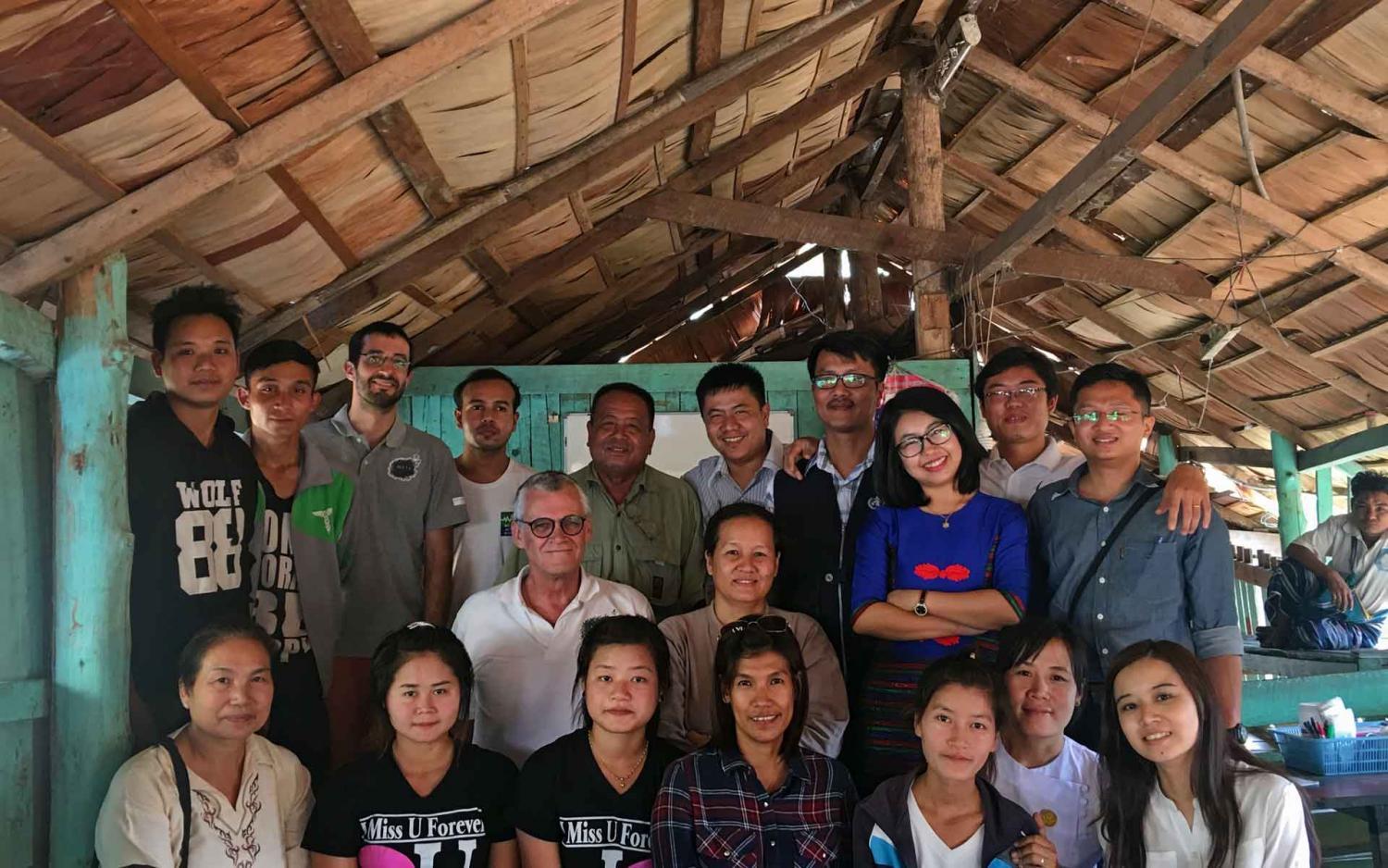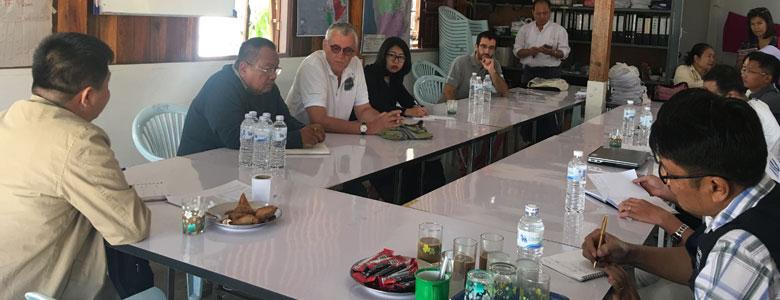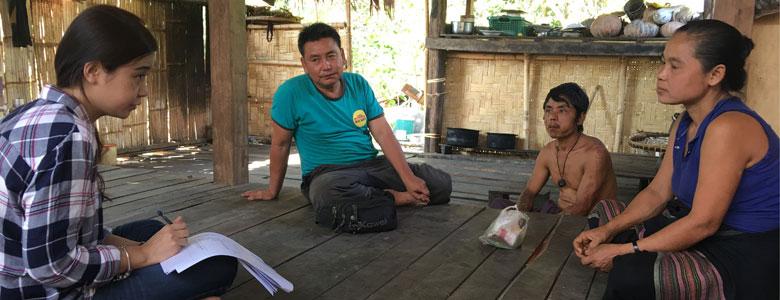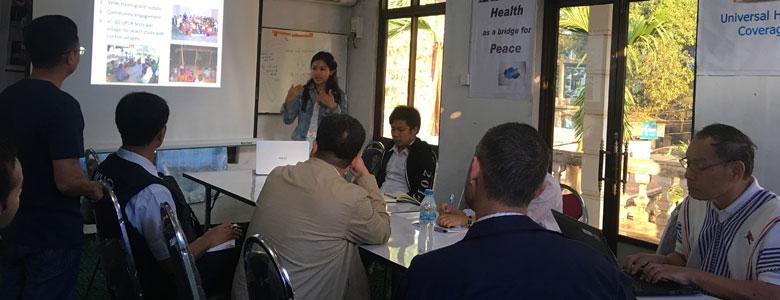PR-UNOPS RAI team carried out a joint field visit with the National Malaria Control Programme and World Health Organization, to the project implementation areas of Shoklo Malaria Research Unit (SMRU) and Medical Action Myanmar (MAM), under the RAI Intercountry Component 1 (ICC1) grants.
PR-UNOPS RAI team carried out a joint field visit with the National Malaria Control Programme and World Health Organization from 16 to 19 February 2017, to the project implementation areas of Shoklo Malaria Research Unit (SMRU) and Medical Action Myanmar (MAM), under the RAI Intercountry Component 1 (ICC1) grants.
The team visited four villages in remote areas of Kayin State, two of which had received mass drug administration (MDA) and two had not. They observed malaria posts, interviewed malaria post workers and checked data in patient record books. In the two villages that had received MDA, interviews with residents were carried out using a structured questionnaire to look at villagers’ knowledge of malaria, preventive practices and importantly their perceptions, experience and acceptance of MDA.
The team found that all malaria posts visited were functioning well and that community acceptance of MDA was good. They were informed that the number of malaria cases had been declining in both MDA and non-MDA villages. However, the number of cases has been gradually increasing again since MDA was completed, even in isolated villages with less population movement.
The team provided recommendations for applying MDA interventions to large population groups in Myanmar. While MDA is an effective intervention in the elimination phase, MDA interventions could be limited to areas with less population movement and should always be accompanied by community engagement and follow-up. They concluded that to reduce malaria burden it is critical to have well-functioning malaria posts with volunteers, given the diverse geographic nature and dynamic environmental and demographic changes in Myanmar. To support their findings, they suggested that more time could be allocated to future review missions to increase the number of villages visited.







